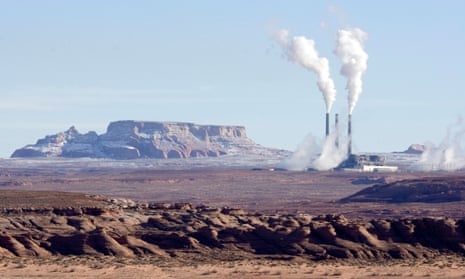After releasing the Clean Power Plan this week the Obama administration must shift from offense to defense. The plan, which set the first national limits on carbon pollution from existing coal- and natural gas-fired power plants, faces two significant risks: one legal, the other political. The administration must address them to achieve the plan’s ambitious goal of cutting carbon emissions 32% below 2005 levels in 2030.
Claiming it is a “war on coal,” the coal industry and several sympathetic states have vowed to fight back with an onslaught of legal challenges. The administration’s legal arguments are strong enough to prevail, but the process will be long and costly.
The first wave of lawsuits has already been announced, with opponents seeking to “stay” the rule, which would immediately suspend it. The stakes are enormous. A stay would stall the administration’s momentum and put the president in the awkward position of having to explain the hold-up at the international climate negotiations in Paris. The Clean Power Plan is the linchpin of the president’s commitment to reduce domestic emissions up to 28% by 2030.
The challengers are unlikely to win a stay, however. To succeed, they must show that, unless the plan is suspended, they will suffer “irreparable harm” during the year or so it will take the court to rule on whether it is lawful. Although petitioners will likely file voluminous, alarmist declarations claiming impending doom, they should be effectively rebuffed.
Anticipating the stay request, the EPA’s rule includes generous compliance deadlines: states have until 2018 to file final implementation plans, and power plants have until 2022 to begin complying with their pollution limits. Challengers will be hard-pressed to persuade anyone they merit a stay.
The stay battle is just the first round, however. The main legal dispute is whether the plan exceeds EPA’s authority under the Clean Air Act, as the challengers claim.
The answer will turn on some hard questions of statutory interpretation. For example, the act requires the EPA to set pollution limits based on what sources can achieve using the “best system of emissions reduction.” The agency found that, because power plants are connected to other sources of electricity on a regional transmission grid, the “best system” for reducing carbon emissions includes substituting zero-carbon sources like wind and solar power, or cleaner natural gas, for coal-powered energy. Industry says this goes beyond regulating the sources themselves. No court has ever addressed whether the “best system” can include substituting sources on the grid.
Normally, agencies are entitled to deference when they interpret ambiguous legal provisions. Under settled precedent, courts let agencies fill in the gaps and silences in the statutes Congress has delegated to them, as long as their interpretations are “reasonable.”
Yet the challengers will argue that courts should not defer to the EPA’s view of “best system” here. And in support, they are likely to invoke two recent Supreme Court rulings that denied agencies the normal deference they have come to expect.
In the first case, the court refused to defer to the EPA’s interpretation of a different provision of the Clean Air Act for failing fully to consider the costs of pollution regulation, sending what some observers believed was a warning shot across the agency’s bow. But that case involved a legal question entirely different from those posed by the Clean Power Plan, and can easily be distinguished, especially because the plan thoroughly assesses costs.
In the other case, the landmark decision upholding the Affordable Care Act, the court refused to defer to the Internal Revenue’s view of the law, noting that the IRS is not Congress’s designated health care agency, and mentioning the case’s “extraordinary” nature and “deep economic and political significance.”
Unlike the IRS in the health care challenge, however, Congress has, in the Clean Air Act, expressly instructed the EPA to implement air pollution rules, a designation that normally automatically triggers deference. And the court has applied deference numerous times before in cases involving agency rules of equally great societal significance, including EPA pollution rules. Generally, the government is on solid legal footing to defend the Clean Power Plan, although it will be a slog.
This brings us to the second risk the plan must overcome, which is political. Regulations are not statutes and a future president would have authority to rescind the plan. Even without formally withdrawing it, a new EPA Administrator could push deadlines back, and otherwise dilly-dally, effectively blocking the rule in its tracks. That is the necessary price of making policy through agency regulations rather than through congressional legislation.
There is of course only one complete response to such political risks: influencing the outcome of the next presidential election.
